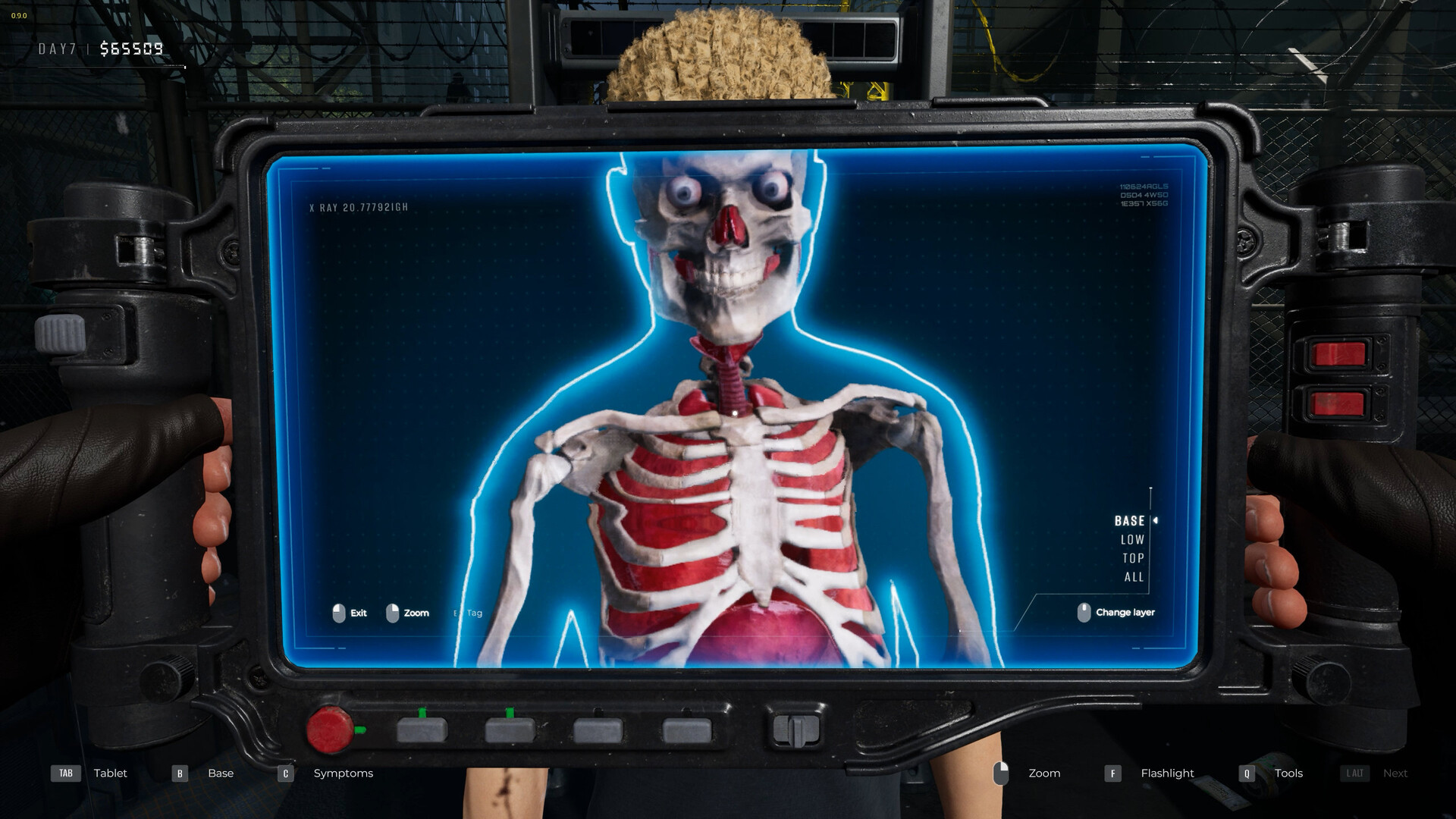Crapshoot: The (Lost) Elder Scrolls
We're rerunning Richard Cobbett's classic Crapshoot column, in which he rolled the dice and took a chance on obscure games—both good and bad.

From 2010 to 2014 Richard Cobbett wrote Crapshoot, a column about rolling the dice to bring random obscure games back into the light. This week, we look back to a time when Skyrim was new and shiny and Battlespire and Redguard were hidden gems. Gems-ish.
Skyrim! It's here, it's awesome, and you're probably playing it right now, aren't you? But here's something interesting you may or may not know—while it's officially The Elder Scrolls V, it's actually the seventh game set in its universe—not including expansion packs like Shivering Isles and Bloodmoon, or a set of mobile games for N-Gage and cellphones. Somewhere in the middle, two went missing—and their names are Battlespire and Redguard. What happened to these lost adventures?
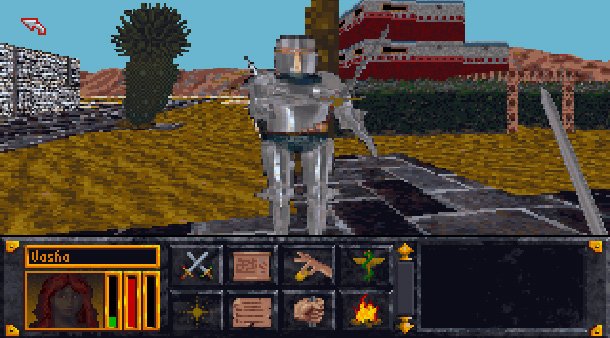
While The Elder Scrolls is currently the biggest single-player RPG universe out there, the surprising thing is that it was never originally intended to be one. The first game, Arena, started out as a gladiatorial combat hack-and-slash about a team of mercenary types fighting their way through fantasy tournament bouts with the aim of ultimately taking down an evil wizard. During development, what had been intended as side-quests ended up becoming the game's core; a game that featured no magic items called Elder Scrolls, nor any fighting in an arena. The first bit was added to the title more or less for the hell of it, the second handwaved by the idea that the land of Tamriel was so dangerous, so chaotic, simply living in it was like living in... uh... an arena, that "Arena" had been adopted as its nickname.
If that sounds tenuous to the point that it could be represented by a piece of Juicy Fruit gum stretched from the North Pole to Saturn, you're right! Allegedly, the only reason was that the adverts and boxes had already been printed, though all the boxes I've ever seen have had the Elder Scrolls tag on them, so that bit may be one of those apocryphal tales that'd taste better with pinch of salt.
Neither of the first two games are particularly obscure, though with the first coming out in 1994 and its sequel, Daggerfall, landing in 1996, but let's take a quick look at them just to set the scene. They're pretty weird games, starting by dropping the player in some of the biggest game worlds ever and ending with conclusive proof that bigger isn't necessarily better—especially in a primitive 3D engine. Daggerfall remains one of the standard worlds that gets trotted out as a comparison whenever someone claims their world has 15 square km or space or whatever, boasting as it does no less than 487,000 of the randomly generated buggers. That's twice the size of Great Britain, with over 15,000 towns, cities, and villages. Or so it says on Wikipedia. If you'd like to go count them for yourself, feel free to correct it.

Don't let the graphics fool you. For the time, this was impressive 3D, and a reasonably deep RPG. It wasn't the narrative-based joy of something like Ultima, but if you just wanted a sandpit, the only thing in your way was one of the most brutal welcoming committees ever. Arena especially came out swinging. You know how Oblivion and Skyrim start with tutorial dungeons? This game starts with a fuck you dungeon. It's big, sprawling, and will kick your ass, but that's only the start of the pain. Dare to sleep in the wrong place, and it actually spawns extra-tough monsters to punish you for it. How bad are we talking? The lead designer—repeat—the lead designer of Morrowind/Oblivion claims to have fired it up around 20 times since it came out, and only finished it once. Not the game. The first dungeon.
And once you're out? It gets worse. You emerge battered and bruised in the middle of an entire continent, with about six million square kilometres of terrain to explore. How many hand-crafted dungeons are there in that, holding plot-relevant things? Seventeen. One plus seven. Not eight. Yow. You may as well try to find a needle in a haystack, blindfolded and using your teeth. Only without the needle. And with a bucket full of scorpions instead of a haystack. Upside down. On the moon. Reached by a rocket. That you built yourself with Kraft cheese slices. Paid for by a part-time snipe-hunting job.
Keep up to date with the most important stories and the best deals, as picked by the PC Gamer team.
Or you could just cheat your arse off, like 99.9% of the people who ever finished it did.
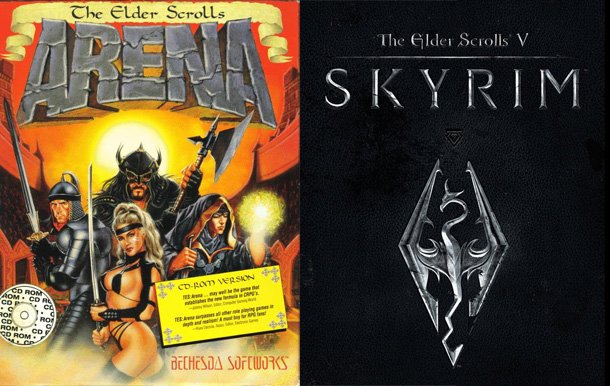
Looking back, it's a miracle the series ever got off the ground... and it almost didn't. It was a buggy mess, with little 'real' content, and a spectacularly bad art swords-and-sleazery cover of the kind that only contemptuous marketing people still persist in thinking gamers will be drawn to. All of that, plus the fact that distributors had been expecting some kind of rock-em-sock-em action game only to get a hardcore RPG instead, meant that Bethesda initially shipped fewer copies of Arena than of The Terminator 2029: Operation Scour—an expansion pack to a completely forgotten licensed game. (That we may do one week.) Hard to imagine now, isn't it?
For their sins though, the Elder Scrolls did some awesome and quirky things—a demo and word-of-mouth attracting the hardcore RPG demographic and and ultimately turning it into a slow-burning success. And not without cause. Being able to make your own spells quickly became a series trademark, though unfortunately not one that continues into Skyrim. Similarly, elements like its melee combat, while rudimentary now, were surprisingly fun for the time. After Arena, Bethesda realised the importance of actual content, and served up a far more complicated world with guilds and missions and a much stronger story... that was also impossible to complete at launch, but never mind... and a ton of options that would still be noteworthy in modern RPGs, like becoming a vampire or a werewolf.
Oh, and one more, that no commercial RPG is ever likely to do again...

Yep. Daggerfall especially was pretty filthy by modern standards, not only leaving your character naked if they took off all their clothes instead of welding tacky underwear to their naughty bits, but sprinkling its world with naked priestesses, horny succubi and more, regardless of whether you switched on the special child-safety mode. And there were plans for other things too, which never made it into the game, like a joinable guild of prostitutes and a cut-scene to play for when sexy time happened.
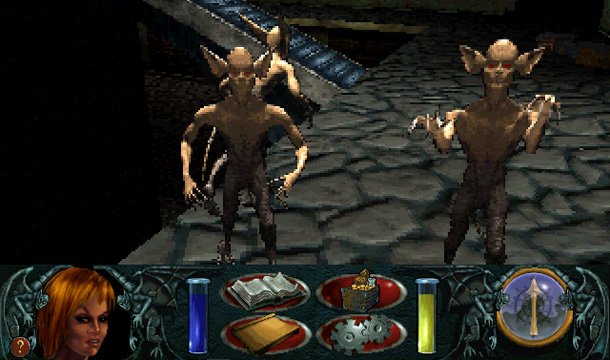
After making a name for the series with Arena and Daggerfall, Bethesda opted to release something completely different. Meet Battlespire—easily the oddest, and by far the worst of the Elder Scrolls series. It was originally intended to be a Daggerfall expansion, but was promoted to a full game during development, which landed right at the end of the DOS era. Where previous games had taken on huge worlds, this took an Ultima Underworld approach and was (almost) entirely set in one mage academy taken over by everyone's favourite baddie who is called Mehrunes Dagon, which is to say, Mehrunes Dagon.
(Incidentally, doesn't "Mehrunes" sound like a particularly apathetic mage? Just saying.)
Battlespire was the first and only game in a spin-off series, Elder Scroll Legends, and the first in the Elder Scolls series as a whole where everything was designed in an editor instead of by throwing a bag of random seeds at a map and seeing what happened. It's also a multiplayer game, though one of the many reasons for its failure was that getting multiplayer running was a real pain in the arse. This wasn't really its fault—server browsers as we know them today were still in their infancy and most people were still on awful modems—but for good and bad, it was a bit ahead of its time.
Never having played it with anyone because other people smell and try take your sweeties, I have no idea how it worked in either co-op, or what's probably best described as the This Game Has Deathmatch? modes. Flying solo though, it's another brutal, brutal game. You're not allowed to rest to regain health, the monsters are hard as nails right from the start, and the design goes out of its way to give you rubbish, fragile equipment. All the niceties of a full RPG are gone, from towns to the wimpy idea of a difficulty curve, replaced by a relentless trudge around every level. Cool things are few and far between, unless you count being able to talk to a few of the monsters if you can persuade them to stop impaling you on their claws for a few seconds, and absolutely awful writing.
Won't lie, I don't have much to say about this game for one reason: I've never gotten more than a couple of levels through it. There are harder RPGs, but the relentless trudge of its hack-and-slash action makes even that much a real grind, and it offers next to no good reason to endure it. At the time, simply getting it running required a hefty PC (mostly because it was built for then-high resolution graphics without having any support for the 3DFX card), with fans more likely to praise it for its very in-depth character creation system than anything in the actual game. Ultima Underworld 2 it was not. And that game got away with saying "OK, you're in a flying castle... with no windows. Just trust us?"
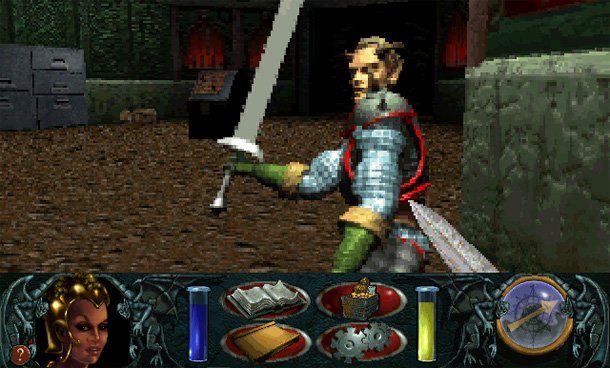
Despite shoving the Elder Scrolls Legends series firmly to the bottom of the drawer, Bethesda decided to try something else. Games like Tomb Raider and Space Bunnies Must Die... more the first than the second... had exploded onto the market, CD was now standard, and 3D acceleration was rapidly spreading. Cue a series that would bring a whole new audience to the world of Nirn/get unceremoniously canned after just one game... The Elder Scrolls Adventures: Redguard.
Redguard was a decent enough action-adventure for its time, if one that deviates even further from the series than Battlespire. It's the only game in the series where you don't get to make your own character and story, casting you as a pirate type called Cyrus on a hunt for his sister on the island Stros M'kai.
It's also the retrogaming equivalent of being broken on the rack.
For some insane reason, Bethesda built the game around two of the Holy Trifecta of pain: Windows, 3DFX and Quicktime. It's a DOS game, but with a Windows installer. Painfully extracting the files by hand and throwing it into DOSBox, you then discover that while it does have a software rendering mode, you're not going to get more than a few frames a second out of it. People tell me it's possible to get it running, but I tried for hours without success—and even then, it apparently breaks midway through. The only way I got anything out of it was with Glidos...

No, Glidos, which seems to work, but adds its own spinning logo to the 3D world unless you cough up $10 for an unlock key to play this, Tomb Raider, and not a vast amount else, really. Still, $10 isn't much. Obviously, only a spectacular skinflint would begrudge the hard-working programmer that.

Even after all this work, nothing's guaranteed. My i7 PC which handles Skyrim on Ultra chugs away like nobody's business, keypresses are laggy, and the sound doesn't work. Also, it's surprisingly hard to fight and keep track of what's going on with the word GLIDOS spinning in front of your face on a constant loop. So, while I originally planned to play through a decent chunk of it and see how it lived up, instead I'm going to have to rely on my memories from playing it way back in 1998. Unfortunately, since my PC at the time was a pile of crap, mostly what I remember is it chugging away like nobody's business, with lots of lag. There was probably music, but I don't recall. Hmm. This is going well...
As attempts to turn a franchise into a 3D adventure go though, it was definitely more successful than most of the time, from King's Quest: Mask of Eternity to Ultima IX. It may not have sold brilliantly, but it wasn't a spin-off that had fans vomiting out their skulls or cursing its name until the nth generation—if only because Morrowind was on its way, and the use of the 'Adventure' tag made it clear that this was a spin-off series. Its hardcore roots would never be left behind! Not even in Oblivion! Cough.
The choice of subject matter definitely didn't hurt it either. Pirates have always been such an undertapped niche that Sid Meier's Pirates! and Monkey Island are the only ones that have ever particularly stood out, and Redguard's take on them was at least reasonable. It used a proper dueling system for instance, more like Prince of Persia than simply hammering the button, but as ever with the Elder Scrolls series pre-Oblivion, leaned firmly towards the 'murder the player' school of game balance. As for the adventure side of 'action-adventure', it didn't cheap out by turning all the characters you might have talked to into kumquats or similar to avoid having to have a conversation system, a rarity at the time, and told a reasonable story on a much smaller scale than the RPGs.
Mind you, it was equally impossible to finish, not because of bugs, but because of unfinished French homework. I think the final boss was the pluperfect tense. But again, I might be mis-remembering.
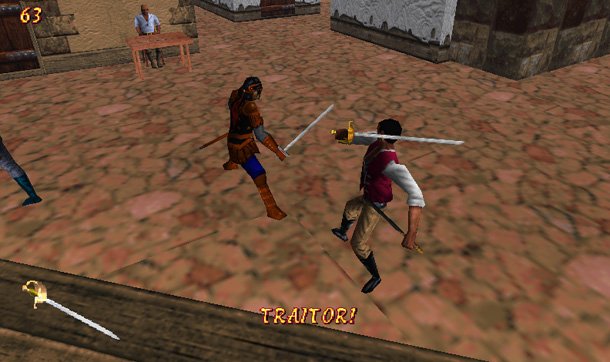
As for the portable games? Being neither a millionaire nor a moron, I've never owned an N-Gage, so I have no idea about that one. Nor have I ever felt the urge to play an RPG on anything less powerful than the iPhone. The only things I know about them is that they were called The Elder Scrolls Travels, and one of them, Dawnstar, is a city that also appears in Skyrim. I'm guessing it looks prettier now than crushed onto a tiny LCD, but you never know. Maybe Bethesda buried it for shame that even with its great technology, it could never hope to create anything so beautiful, so realistic, so transcendent. In a thousand years, maybe archeologists will uncover it and be instantly blinded by the sight of their very God, the revered game that has sparked churches and crusades, and a new Golden Age based on the hope that one day humanity may again touch such perfection, pair it with one of those plastic wristwatches that played Altered Beast, and take off into the celestial heavens cosmos on a mission of love that will spread light to the darkest corners like a beacon. A beacon called Dawnstar...
...
Anyway, if you only play one Elder Scrolls game this weekend, make it Skyrim. Obviously. But if you're interested in taking a trip back to see how things first started, both Arena and Daggerfall have been released free, and don't take much dicking around with DOSBox to get up and running. The original versions aren't the best ones, so I'd recommend going through The Elder Scrolls Pages for links to fan-patches, extra content, and the information you'll need to even stand a chance without a copy of the manuals to hand. They're not easy games, and if you're not willing to basically make your own fun, you're probably best off steering clear. As a way of really appreciating how awesome Skyrim is though, you won't find may better ways short of... well... actually playing Skyrim. Like you already are.
And on that note, if you'll excuse me, I have a Dark Brotherhood to murder my way into.

